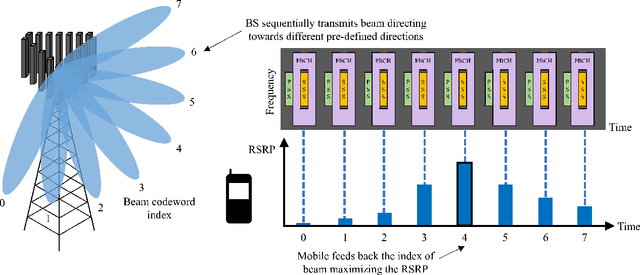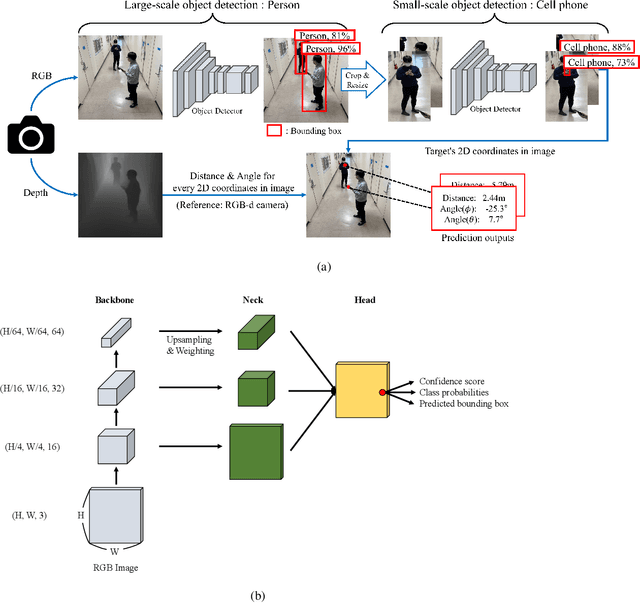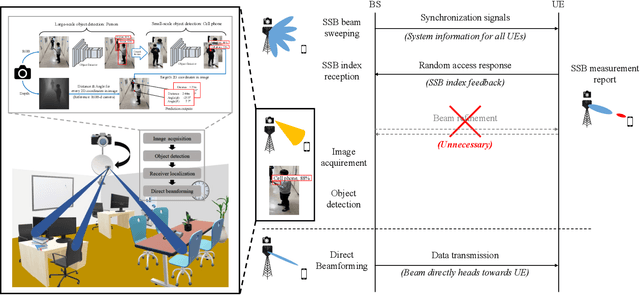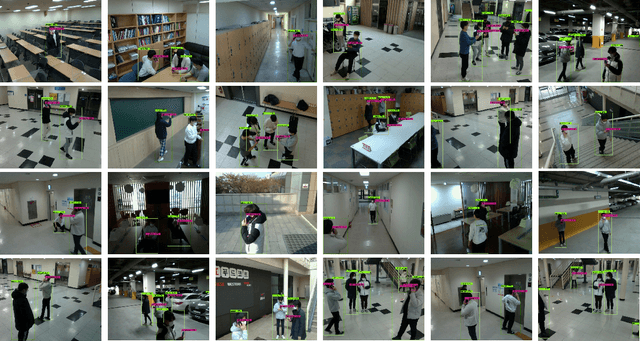Sangtae Kim
Towards Intelligent Millimeter and Terahertz Communication for 6G: Computer Vision-aided Beamforming
Sep 06, 2022



Abstract:Beamforming technique realized by the multiple-input-multiple-output (MIMO) antenna arrays has been widely used to compensate for the severe path loss in the millimeter wave (mmWave) bands. In 5G NR system, the beam sweeping and beam refinement are employed to find out the best beam codeword aligned to the mobile. Due to the complicated handshaking and finite resolution of the codebook, today's 5G-based beam management strategy is ineffective in various scenarios in terms of the data rate, energy consumption, and also processing latency. An aim of this article is to introduce a new type of beam management framework based on the computer vision (CV) technique. In this framework referred to as computer vision-aided beam management (CVBM), a camera attached to the BS captures the image and then the deep learning-based object detector identifies the 3D location of the mobile. Since the base station can directly set the beam direction without codebook quantization and feedback delay, CVBM achieves the significant beamforming gain and latency reduction. Using the specially designed dataset called Vision Objects for Beam Management (VOBEM), we demonstrate that CVBM achieves more than 40% improvement in the beamforming gain and 40% reduction in the beam training overhead over the 5G NR beam management.
 Add to Chrome
Add to Chrome Add to Firefox
Add to Firefox Add to Edge
Add to Edge